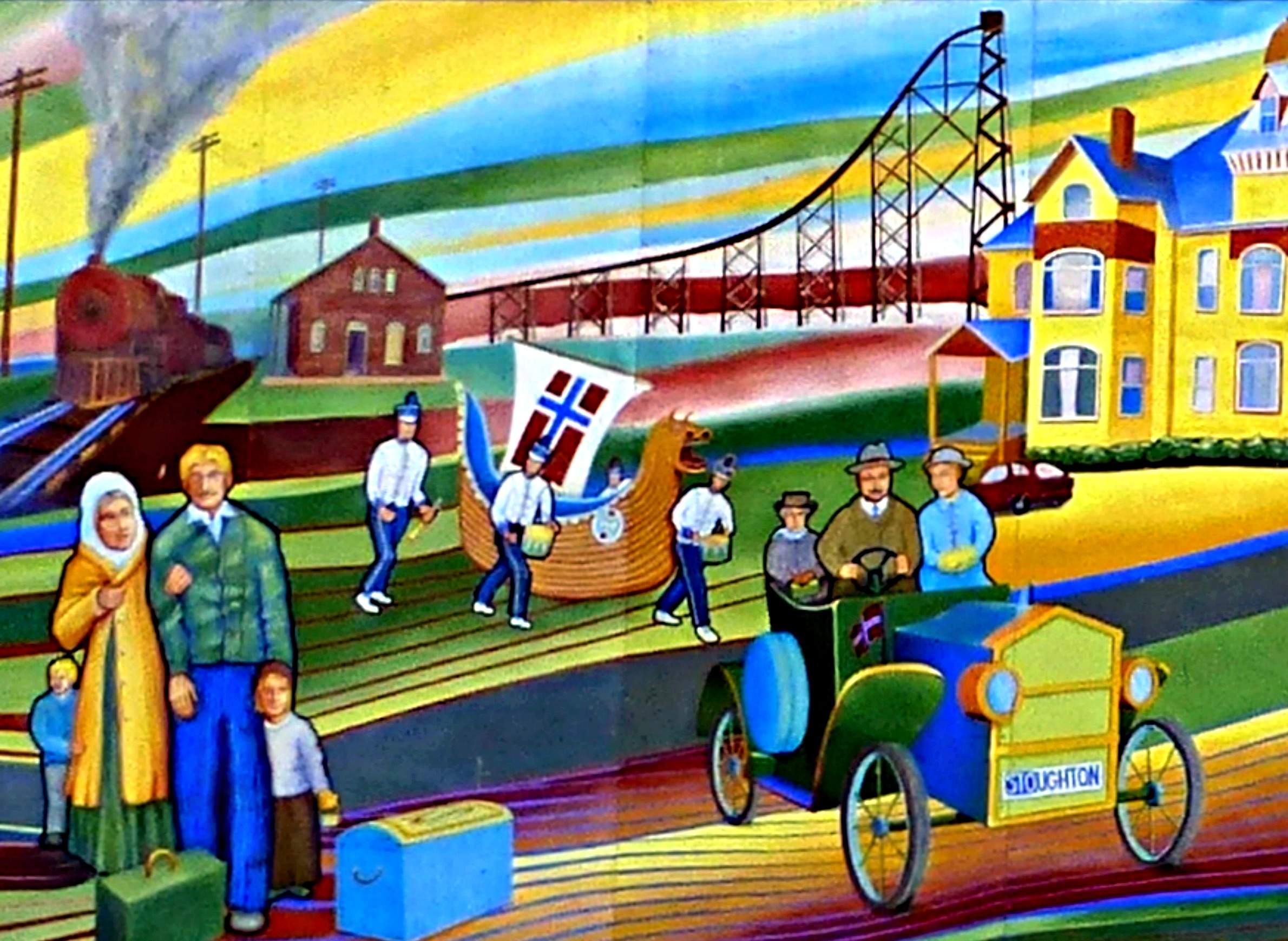
The Stoughton Heritage Mural highlights the role Norwegian immigrants played in the Dane County community.

The Stoughton Heritage Mural highlights the role Norwegian immigrants played in the Dane County community.
For many Upper Midwesterners in the 21st century, not much could seem more familiar than the marks of Scandinavian influence on regional culture. But there was a time in North American history when Norwegians, Swedes and Danes were considered peculiar outsiders, struggling to gain an economic foothold and facing down the nativist resistance every immigrant group to this country has encountered to one extent or another.
About 3 million Scandinavians immigrated to the U.S. between 1825 and 1925, settling across the country but mostly in Minnesota, Wisconsin, North Dakota, and Iowa. In a September 15, 2015, talk at the Wisconsin Historical Museum in Madison, University of Wisconsin-Madison Scandinavian Studies professor Julie K. Allen detailed how these immigrants established themselves so firmly in the fabric of the Upper Midwest, balancing enduring cultural roots with an eagerness to adapt to their new homeland. Her talk was recorded for Wisconsin Public Television's University Place.
Allen explained how Scandinavian-Americans not only introduced many cultural traditions to American life, but also built up enduring institutions, from Lutheran churches to folk schools to ornate wedding outfits. The result, she said, was the development of several "hybrid Scandinavian-American cultures."
One unique example of Scandinavian culture and its effect on the upper Midwest is the Kensington Runestone. Brought forth by a Swedish immigrant farmer living in west-central Minnesota at the turn of the 20th century, this 200-pound block of sandstone, inscribed with runes, tells a story of a Scandinavian expedition that reached the area by way of Hudson Bay in 1362. Considered by most scholars to be a hoax, the stone's provenance has nonetheless remained a subject of debate in the region.
In her talk, Allen explained why this artifact matters, regardless of its authenticity. "Public enthusiasm for the Kensington Stone underscored the desire of Scandinavian Americans to demonstrate their close and enduring connection to their new homeland," she said.